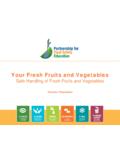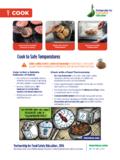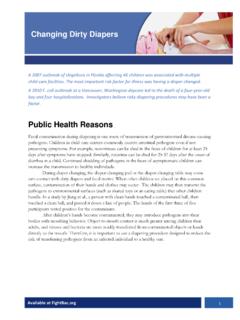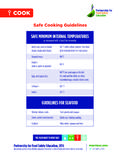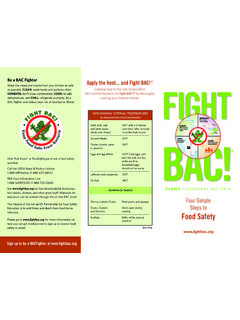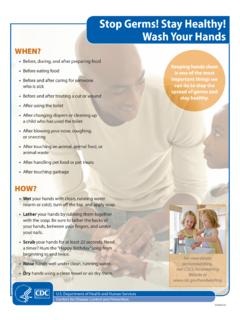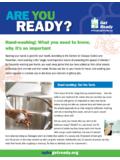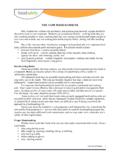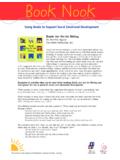Transcription of and Water Wash Hands and Surfaces Often - Fight Bac!
1 wash Hands and Surfaces Often wash your Hands with warm Water and soap for at least 20 seconds!Partnership for Food Safety Education, 2016 How? Wet your Hands with warm running Water and apply soap. Rub your Hands together to make a lather and scrub them well. Be sure to scrub the backs of your Hands , between your fingers and under your nails. Continue rubbing Hands for at least 20 seconds about the time it takes to sing the Happy Birthday song twice. Rinse your Hands well under running Water . Dry your Hands using a clean cloth or paper Before eating food Before, during and after preparing food Before and after treating a cut or wound Before and after caring for someone who is sick After handling uncooked eggs or raw meat, poultry or seafood (or their juices) After blowing your nose, coughing or sneezing After touching an animal or animal waste After touching garbage After using the develop and promote effective education programs to reduce foodborne illness risk for @Fight_BACWash Hands with Soapand WaterClean SurfacesRinse ProduceFoodborne bacteria can t be seen, tasted or smelled.
2 These microorganisms can make you sick if ingested, and they spread through contact with cutting boards, utensils, countertops and food so ready, set, CLEAN! DID YOU KNOW?In a recent study, 65 percent of consumers did not wash their Hands before starting meal , C. (2014). Chicken Preparation in the Home: An Observational Study. Food Protection Trends, 34, SurfacesKeep your Scene CleanBacteria that can cause illness can survive in many places around your kitchen. Keep countertops and other kitchen Surfaces clean to prevent cross-contamination. CLEAN Surfaces with hot Water and soap to remove dirt and debris. Do this after preparing each food item and before going on to the next food item. Keep your fridge clean, too: Wipe spills immediately and regularly clean the inside with hot Water and liquid with paper towels. After cleaning, you may SANITIZE Surfaces as an extra precaution to kill germs.
3 Use a solution of 1 tablespoon of unscented liquid chlorine bleach and 1 gallon of Water . Apply to Surfaces , and allow to stand for several minutes. Air dry or pat dry with fresh paper your cutting boards, dishes and utensils with hot Water and soap after preparing each food item and before you go on to the next ProduceRinse fresh fruits and veggies under running Water just before eating, even if you plan to cut or peel them, because bacteria can spread from the outside to the inside during cutting or peeling. Firm-skinned fruits and veggies should be rubbed by hand or scrubbed with a clean brush while rinsing under running Water . Packaged fruits and veggies labeled ready-to-eat, washed or triple-washed should not be washed. Doing so may increase the risk for cross-contamination. Dry fruits and veggies with a clean cloth or paper towel. Do not use soap or bleach to wash produce.
4 These products are not intended for consumption. For more information, check out our ProducePro fact sheet at @Fight_BACTHE FOUR WAYS TO Fight BAC!Partnership for Food Safety Education, 2016We develop and promote effective education programs to reduce foodborne illness risk for consumers.
